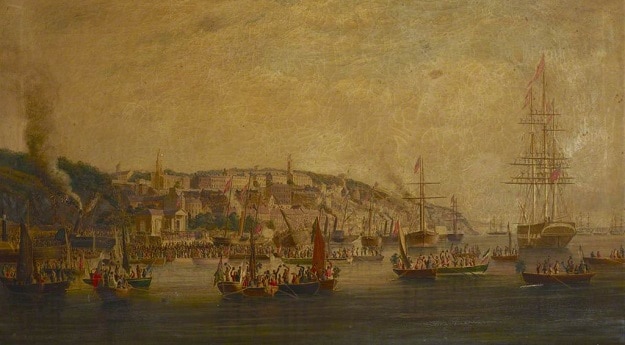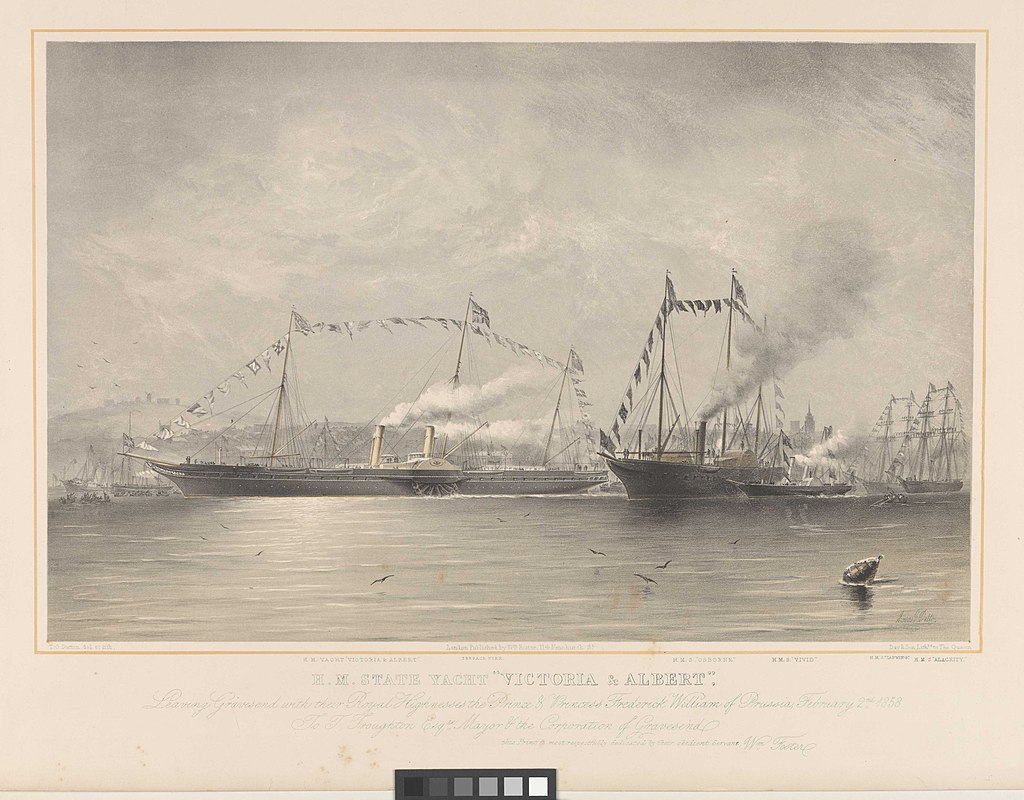In 1845, potato blight spread across Ireland and the Great Famine began to take hold among the country’s peasants, labourers, tenant farmers and everyone else whose diet relied upon potatoes.
By the following year, its devastating impact was undeniable as records began to show increasing numbers of deaths caused by starvation. It was against this backdrop that 26-year-old Queen Victoria decided to cancel a visit to Ireland – partly for reasons of safety.
Growing anger towards British leaders
Queen Victoria and her advisors may have been right to be cautious. As conditions deteriorated, many Irish began to express their outrage. In the winter of 1845, communities in the midlands began rioting to prevent food and crops from leaving their areas. This trend spread to other regions in the spring of 1846 as food prices increased.
In 1847, Major Denis Mahon of the Strokestown Estate was the first landlord to be murdered during the famine; this kicked off another violent trend which put a target on the back of landlords, agents and their middlemen. Then, in 1848, the Young Ireland movement led a nationalist uprising against the British in county Tipperary.
Queen Victoria was far removed from much of this upheaval. But in 1849, one act of protest hit much closer to home when William Hamilton – an unemployed bricklayer from county Limerick – attempted to shoot the queen as her open carriage made its way to Buckingham Palace.
His assassination attempt failed and he was quickly overpowered. Some reports say the young man was angered by the famine and the treatment of the starving Irish, while others say he committed such a serious crime simply to ensure that he was given a cell to sleep in. Whatever his intention, the following month he was sentenced to serve five years penal servitude in Gibraltar and was then deported to Australia.
However, Queen Victoria remained unphased by Hamilton’s actions. (His was the fifth of eight failed assassination attempts during her reign.) So later that same year, when the British government claimed the worst of the famine was over, Queen Victoria announced that she would visit Ireland the following summer.
In reality, the blight continued, workhouses were full, death from hunger was common and emigration was at an all-time high. Despite this, the British government ended its relief work and Queen Victoria insisted that Ireland’s future was promising.
The Jeanie Johnston vs the royal yacht
On July 23rd, 1849, the Jeanie Johnston docked at Cobh harbour in county Cork – just a few days before Queen Victoria’s arrival there.
While the Jeanie Johnston usually travelled back and forth between Quebec and Tralee, 1849 was the exception. In March of that year, 142 passengers paid £4 4 shillings to sail from Tralee, county Kerry, to Baltimore in Maryland. Upon its arrival, the ship was loaded up with grain, which it then delivered to the port town of Cobh.
Just over a week later, the three-masted ship was dwarfed by the queen’s luxury yacht, which was aptly named the Victoria and Albert. On board was the queen, her husband and their four eldest children.
According to the Royal Museums Greenwich, the multi-decked yacht was 200 feet long and weighed 1,034 tons. Featuring a twin set of engines which produced 430-horsepower, it was the first royal yacht to be powered by steam. On board, there were grand rooms, two massive guns and a looming smokestack that could be seen from miles away.
Unlike the Jeanie Johnston and other famine ships of that time, the royal yacht’s innovative steam technology allowed it to make quick, safe and reliable journeys – even when the wind was calm. For comparison, the Jeanie Johnston weighed just 408 tons and was actually designed for carrying cargo – rather than passengers.
Given the overlapping schedules of the two ships, it is likely that they were anchored side by side in the harbour when the queen landed on August 2nd. In fact, according to All Standing: The Remarkable Story of the Jeanie Johnston by Kathryn Miles, an artist’s rendering of the queen’s arrival shows two ships around the Jeanie Johnston’s size docked on each side of the yacht – dwarfed by its massive hull.
An unexpected welcome
Although some groups were hostile towards the monarchy, the queen was greeted with bunting, flowers and cheering crowds upon her arrival in Cobh. Local officials even asked her to rename the town Queenstown; a request which she granted.
In her diary, the queen wrote: “We drove through principal streets; twice through some of them; that they were densely crowded… that our reception was most enthusiastic; and that everything went off to perfection, and was very well arranged… At the last triumphal arch, a poor little dove was let down into my lap, with an olive branch round its neck, alive and very tame.”
Generally, the response to her visit was positive. Ordinary people lined the streets to catch a glimpse of her, while hosts pulled out all the stops to welcome her. Encountering only extravagant feasts and festivities, the queen wouldn’t have seen any signs of famine.
She was shielded during her 11 day visit. Travelling from Cork, to Dublin and then onto Belfast, her schedule was carefully choreographed so that she only visited the east of the country. It was in the west that the worst effects of blight and famine were being felt. She also stayed safely on her boat each night.
Although she may have noticed that some members of the Catholic clergy, like the archbishops of Tuam and Cashel, had boycotted the royal events, she was warmly welcomed at the Carton House Estate. Here, she visited a thatched cottage and tenants performed Irish dances for her. These tenants also received a free meal in honour of the occasion.
Emigration continues
As the royal yacht returned home, the Jeanie Johnston set sail for North America once again with a hold full of emigrating passengers. Four years later, when Queen Victoria returned to Ireland for her second visit in 1853, the official results of the most recent census were just being released.
As Kathryn Miles puts it in her book: “Ireland’s population had not risen to nine million, as predicted, nor had it maintained its 1841 count of eight million. Instead the famine had reduced the population of the island to 6.5 million. It was the first conclusive and irrefutable evidence of just how catastrophic losses from the Great Hunger had been”.
To find out more about the Jeanie Johnston and the fate of its famine era passengers, visit the replica ship in Dublin’s docklands. Book your tickets here.
(Featured image – George Mounsey Wheatley Atkinson, Public domain, via Wikimedia Commons)


